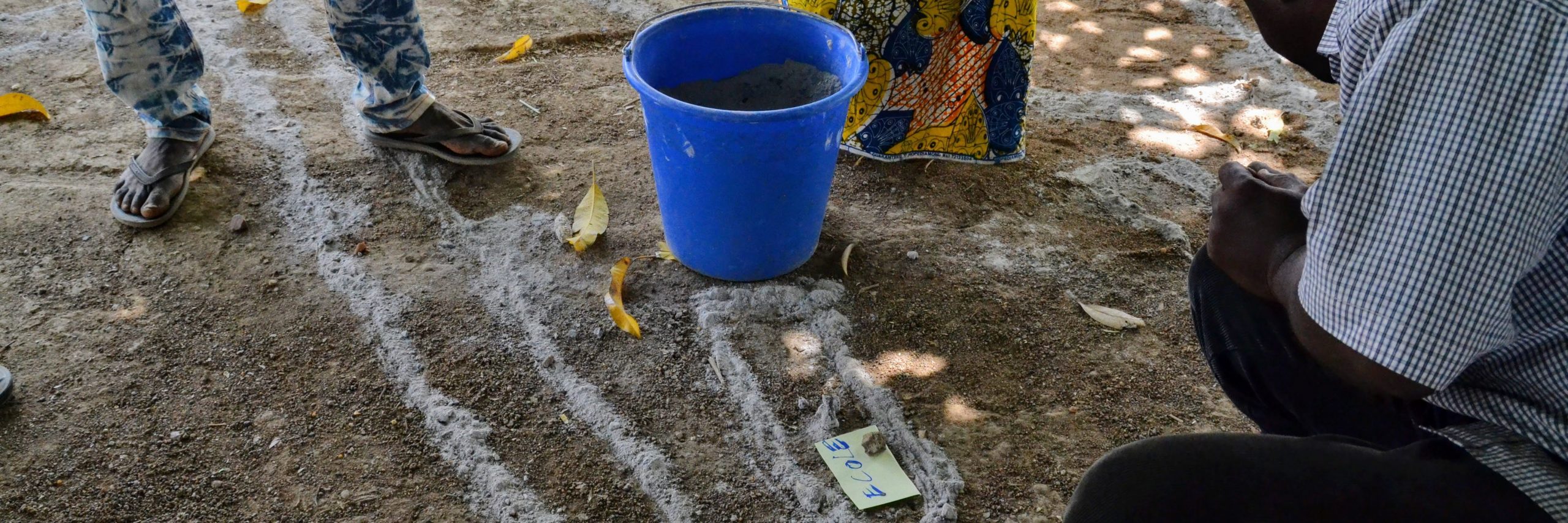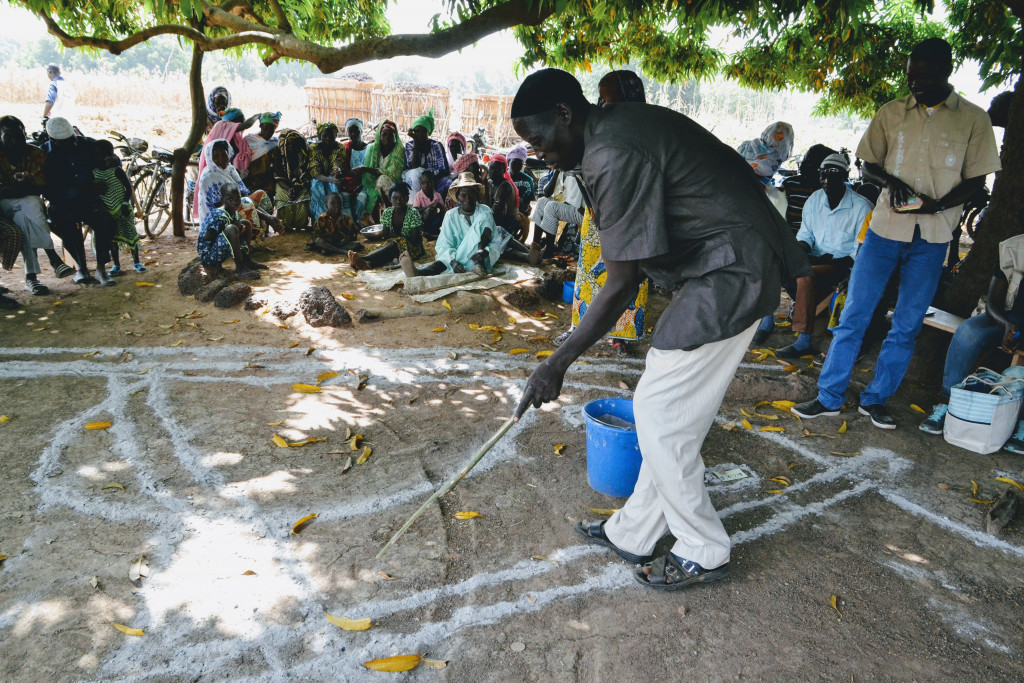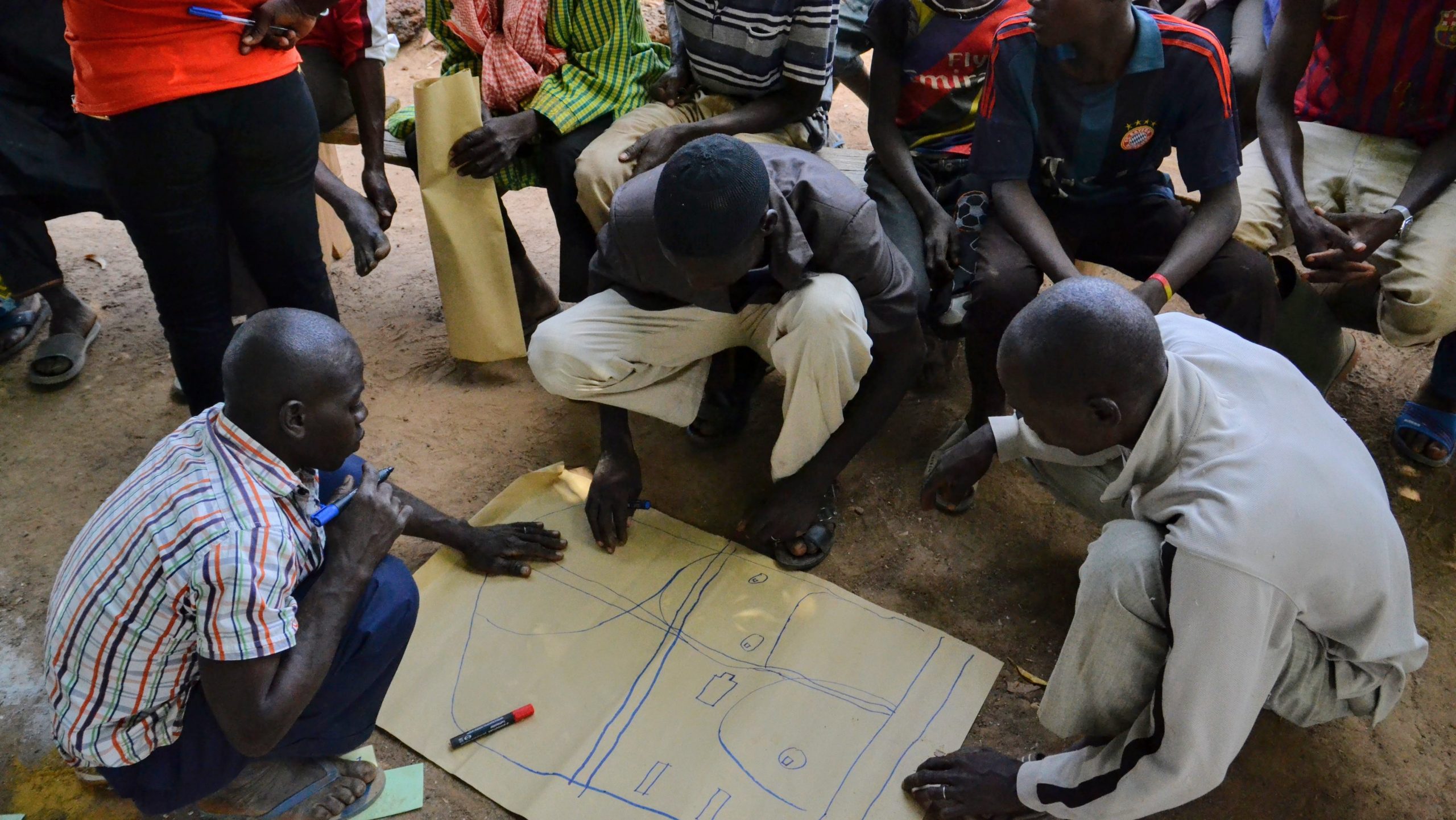Central West region, Burkina Faso
In collaboration with

From November 2017 to October 2020
In the Central West region of Burkina Faso, we apply the CLTS method to ensure that the eradication of open defecation benefits 2,140 families.
Objectives
- To improve the behaviour and practices of the population in reference to open defecation, so as to abandon this practice.
Beneficiaries
15,000 direct
There are an estimated 2,140 families, with an average of 7 members per family, a total of 15,000 people in 30 communities.
30,000 indirect
They are families in neighbouring rural communities, authorities, and educational and health staff of the intervention areas.

On the ground
In the area, there is a severe lack of access to water and sanitation and a high rate of open defecation, which causes an increased persistence of water-borne diseases and malnutrition among children.
The Central West region has a low rate of access to sanitation infrastructures (26%) and a high prevalence of open defecation (68%). The percentage of population with no access to an improved source of water is of 18%. As for the rural areas of the region, the rate of access of families to sanitation infrastructures is as low as 11.9%.
This results in a high persistence of water-borne diseases among boys and girls. The prevalence of diarrhoea reaches 20.7% in children under the age of 5. These diseases are also one of the main causes of malnutrition; 10.4% of the children under the age of 5 suffer from acute malnutrition.
The rate of stunted growth, caused by chronic malnutrition, reaches 30.2%; both the water-borne diseases and malnutrition significantly contribute to the high infant mortality rate (82 per 10.000 live births, MICS 2010).

In detail
The CLTS (Community-led total sanitation) method aims to raise awareness in communities of the public health problems caused by such a practice, so that it is the population itself who searches for solutions to solve that situation.
CLTS is an innovative and participatory approach that encourages the community to analyse its health and sanitation situation and to take decisions to end open defecation by building its own latrines. This methodology acknowledges that the simple fact of building latrines does not guarantee their use or a change in practices and attitudes with regard to sanitation and hygiene. The building of at least 1,800 latrines is expected with this project.
Once the community verifies the poor hygiene and health conditions of its environment and witnesses the implications of those conditions, it starts feeling rejection and shame of its own practices, causing a change in them. Likewise, the knowledge of the population in regard to the building and maintenance of latrines is also increased.
All the interventions are based on a deep analysis and consultation processes with the beneficiary population, national authorities and local and religious leaders in the area of intervention. The hygiene promotion materials will be developed in the languages of the beneficiary population and will be accessible to people with different levels of training and education. The implication of the district authorities also guarantees a development plan to respond to the priorities identified in the community.
Due to the high degree of participation of the local population, the impact of the intervention is greater, with a greater appropriation of it and as a result, a change in behaviour and habits.
What will be the social impact of the project?
The water, sanitation and hygiene programmes aim to provide healthy conditions to boys and girls and to promote the improvement of health throughout life.
These interventions make diseases caused by the lack of hygiene recede considerably, reducing as well the malnutrition rate and child morbidity.
Likewise, the gender approach is integrated in every step of the project, with special emphasis not only on the participation of girls and women, but also on the positive impact of the intervention on them (menstrual hygiene, for instance). Girls and women are often the most disadvantaged groups with regard to water and sanitation, either because they are the ones to walk long distances to collect water or because they are the ones to clean and maintain the latrines and their use is sometimes reserved to men.


